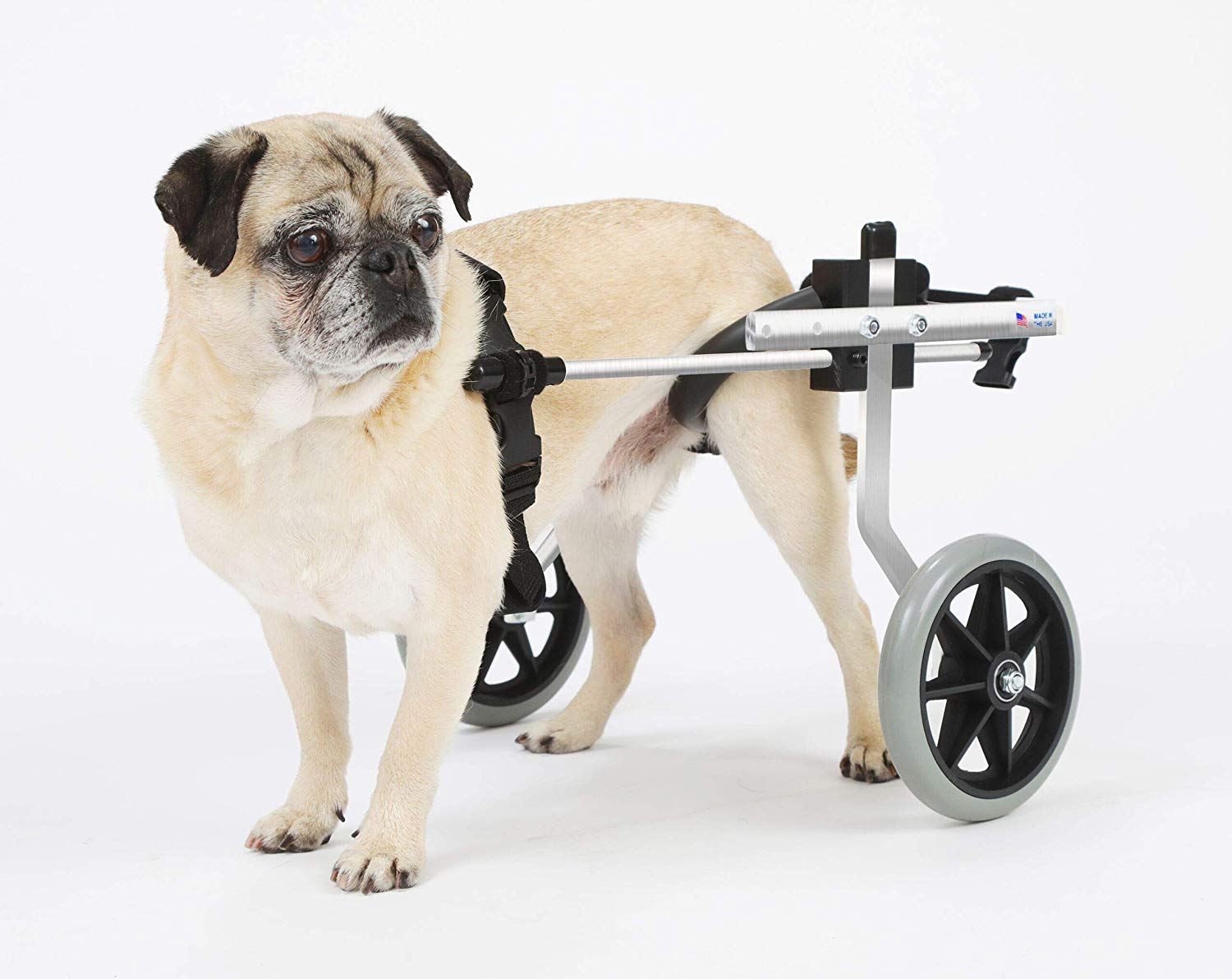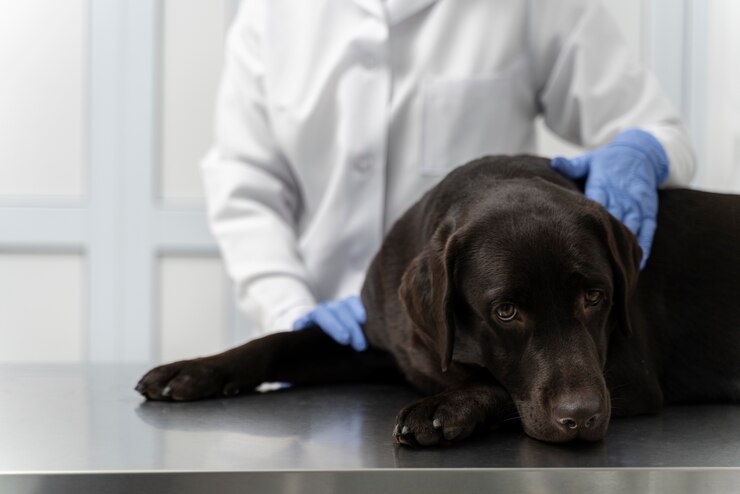Dog
What country produces Science Diet dog food?

You have probably already purchased one or two pet line formulas if you have a dog with a medical condition.
The formulae are essentially available everywhere, including pet specialty shops, veterinary offices, and pharmacies.
Although they are intended to treat particular medical conditions, even healthy dogs and cats can benefit from them.
Perhaps you are considering buying your canine companion a Science Diet formula but are unsure if it would be a wise choice.
Every food your dog eats must be thoroughly inspected by you as their pet parent.
Foods containing high quantities of dangerous substances have caused many pets to pass away or suffer a great deal.
You do not want yours to be included.
In this article, I’ll address a popular query from pet owners to help you decide whether Science Diet dog food is cost-effective: where dog food created with science diet is made
Let’s get right to it.
At a Glance: Science Diet Dog Food
The renowned dog food company Science Diet is a division of Hill’s Pet Nutrition.
It belongs to the company’s many brands of pet food.
In essence, the diet offers specialised nutrients for dogs with different life phases and health issues.
Its formulae are diverse—possibly much more so than those of any other brand on the market.
The diet was first made popular in the business in the 1930s by Morris Frank, a man who had an ailing German shepherd.
After a comprehensive examination and diagnosis, Frank and a canine specialist determined the dog was experiencing kidney failure, which was brought on by malnutrition.
Soon after, he and his wife started preparing special dog food for the animal.
Their efforts paid off, and after the dog healed, they decided to start a business making specialist pet food.
Under the name Hill’s Pet Nutrition, the pair continued to produce unique dog foods until Colgate-Palmolive Company eventually acquired them.
Real chicken is the first component of the Science diet, providing your pet with a strong nutritional foundation.
Whether your dog is healthy or ill, he needs a healthy serving of lean protein to improve his general wellbeing.
Whole-grain corn, whole-grain wheat, pearled barley, grain sorghum, and corn gluten meal are additional ingredients.
The recipes below include ingredients like dried pulp, chicken meal, and chicken fat, all of which in some way improve the health of your dog.
What country produces Science Diet dog food?
As previously indicated, Hill’s Pet Nutrition, which is owned by Colgate-Palmolive, is the parent company of the Science Diet brand.
The company’s US-based manufacturing plants produce the diets.
The primary plant is a 500,000-square-foot, cutting-edge building constructed in 2010 near Emporia, Kansas.
Colgate-Palmolive also owns facilities in Topeka, Kansas, Richmond, Indiana, and Bowling Green, Kentucky, in addition to a facility that produces canned pet food and the company’s main office, the Pet Nutrition centre.
Generally speaking, Hill’s Pet Nutrition Company owns manufacturing facilities in various nations, specifically the Czech Republic and the Netherlands.
Each recipe for Science Diet complies with the canine standards established by the Association of American Feed Control Officials (AAFCO).
Every recipe is thought to be balanced and comprehensive for the stage of life or health condition indicated on the packaging.
In its manufacturing facilities, Hill’s Pet controls the selection of ingredients, processing, and testing of all its products.
The National Research Council in Washington, DC, sets the nutritional standards.
Dog
Wheelchairs for Dogs Enhancing Mobility and Quality of Life

For many pet owners, dogs are more than just animals they’re cherished companions who bring immense joy and companionship. Unfortunately, some dogs experience mobility challenges due to injuries, illnesses, or congenital conditions that affect their ability to walk or run. Fortunately, technological advancements and innovative solutions have paved the way for the creation of specialized wheelchairs designed specifically for dogs. These devices play a crucial role in improving the mobility and overall quality of life for these beloved pets.
Understanding the Need for Dog Wheelchairs
Dogs can encounter mobility issues due to various reasons, including spinal injuries, degenerative diseases, neurological disorders, and limb amputations. Such conditions can severely limit a dog’s movement and impact their independence. Wheelchairs for dogs provide essential support by assisting in weight-bearing, enabling them to move freely, exercise, and engage in regular activities without excessive strain or discomfort.
Design and Functionality of Dog Wheelchairs
Dog wheelchairs are custom-built devices tailored to fit the unique anatomy and size of different dog breed. These wheelchairs typically consist of a frame, wheels, straps or harnesses, and padding for comfort. The design varies based on the dog’s needs rear support for hind limb weakness, front support for forelimb disabilities, or full-body support for dogs with more complex conditions.
Most wheelchairs are adjustable, allowing for modifications as the dog’s condition progresses or changes. They’re lightweight and crafted from durable materials to ensure ease of movement and durability. Some models even come with accessories such as all-terrain wheels for outdoor adventures or additional support for stability.
Benefits of Using Wheelchairs for Dogs
The advantages of dog wheelchairs are manifold. Primarily, these devices restore mobility and independence, enabling dogs to move around freely, exercise, and participate in activities they previously enjoyed. Enhanced mobility helps prevent muscle atrophy, maintains joint flexibility, and contributes to better overall health.
Additionally, wheelchairs can improve a dog’s mental well-being by reducing frustration and anxiety associated with limited movement. It fosters a sense of normalcy and allows them to remain an active part of their family’s life. Moreover, dog wheelchairs can alleviate the burden on pet owners, making it easier to care for their disabled pets and reducing the risk of caretaker burnout.
Adoption and Adaptation to Dog Wheelchairs
Introducing a dog to a wheelchair requires patience and positive reinforcement. Initially, some dogs may be hesitant or uncomfortable with the device. Training and gradual introduction play a crucial role in helping them adapt. Encouraging them with treats, short sessions, and gentle guidance can help dogs become accustomed to the wheelchair.
It’s essential to monitor the dog’s comfort and make necessary adjustments to ensure the wheelchair fits properly without causing any discomfort or chafing. Regular checks and proper maintenance are vital to ensure the wheelchair remains functional and comfortable for the dog.
Impact on the Pet-Owner Relationship
The use of wheelchairs can deepen the bond between pets and their owners. Owners often witness their dog’s determination and resilience, strengthening their emotional connection. Furthermore, the satisfaction derived from witnessing their pet’s improved quality of life reinforces the sense of companionship and care.
Conclusion
Wheelchairs for dogs are invaluable tools that significantly improve the lives of disabled or mobility-impaired pets. These devices not only restore freedom of movement but also contribute to the overall well-being and happiness of the dog. The advancements in veterinary medicine and technology continue to drive innovation in creating more tailored and effective solutions, providing hope and support for dogs and their loving owners.
Through these wheelchairs, dogs can continue to enjoy a fulfilling life, filled with love, play, and companionship, reaffirming the timeless bond between humans and their furry companions.
Dog
Understanding Dog Constipation

Dogs are cherished friends that are renowned for their lively nature and unwavering devotion. But just like people, dogs can have health problems, and constipation is a typical ailment that they face. It’s critical for responsible pet owners to be aware of the warning symptoms, comprehend the underlying causes, and understand how to treat and avoid constipation in dogs.
What Is Constipation in Dogs?
Constipation in dogs is the inability to easily pass stool due to irregular or difficult bowel motions. Dogs typically urinate once or more times a day, according to their age, diet, and general health. Constipation in dogs results in firm, dry stools that are difficult to pass, which can be uncomfortable and possibly lead to health issues.
Dog constipation causes:
Dog constipation can be caused by a number of things, such as:
- Dietary Problems: Constipation may result from abrupt dietary changes or inadequate fiber consumption. Low-fiber diets might cause firmer, more difficult-to-pass stools.
- Dehydration: Drinking too little water can make the body absorb additional moisture from the feces, which makes it harder to pass and dry.
- Absence of Exercise: Getting regular exercise encourages bowel movements. Dogs that lead sedentary lives may be more prone to constipation.
- Obstructions: Eating non-digestible materials such as hair, bones, or foreign objects can clog the digestive track and cause constipation.
- Underlying Medical Conditions: Disorders such enlarged prostates, anal gland disorders, neurological diseases, or digestive system cancers can cause
Symptoms of Dog Constipation:
Identifying constipation symptoms in dogs is crucial for early intervention. Look out for the following signs:
- Straining: Continuous attempts to defecate with little or no results is a telltale sign of constipation.
- Dry, Hard Stool: Stools that are dry, hard, and smaller than usual indicate constipation.
- Abdominal Discomfort: Your dog may show signs of discomfort, such as restlessness, whining, or a hunched posture due to abdominal pain.
- Loss of Appetite: Constipated dogs might lose their appetite or show a decreased interest in food.
- Vomiting: In severe cases, constipation can lead to vomiting, as the gastrointestinal tract becomes impacted.
Treating Dog Constipation:
If you suspect your dog is constipated, it’s essential to consult a veterinarian for proper diagnosis and treatment. However, some measures can help alleviate constipation:
- Dietary Changes: Adding fiber-rich foods like pumpkin, sweet potatoes, or bran to your dog’s diet can soften stools and facilitate bowel movements.
- Hydration: Ensure your dog has access to fresh water at all times. Increased water intake helps soften stools and promotes bowel movements.
- Exercise: Regular exercise aids digestion and encourages bowel movements. Take your dog for walks or engage in active play sessions.
- Medication: Your vet may prescribe stool softeners or laxatives to help your dog pass stools more comfortably.
- Enemas or Manual Extraction: In severe cases, a veterinarian may need to perform an enema or manually extract the impacted stool under sedation.
Preventing Dog Constipation:
Prevention is key in managing constipation in dogs:
- Balanced Diet: Feed your dog a well-balanced diet with adequate fiber content to promote healthy digestion.
- Hydration: Ensure your dog drinks enough water to maintain proper hydration levels.
- Regular Exercise: Incorporate regular physical activity into your dog’s routine to support gastrointestinal health.
- Monitor Health: Regular veterinary check-ups can help detect and address any underlying health issues that may lead to constipation.
Conclusion
Dog constipation can be uncomfortable and concerning for both pets and owners. By understanding the causes, recognizing symptoms, and taking preventive measures, pet owners can help their dogs maintain healthy digestion and overall well-being. Consulting a veterinarian for proper diagnosis and guidance is essential in managing and preventing constipation in dogs.
Dog
Top Paw Dog Toys

When it comes to finding the best toy for your dog, there are a few factors that you should take into consideration. Whether your pet is a high energy or a low energy dog, you need to find a toy that will keep him or her engaged. If your pup enjoys playing tug-a-war, you should find a tug toy that will be durable and safe for use.
Rubber tug toy vs nylon tug toy
In the search for the perfect tug toy for your top paw dog, there are many to choose from. However, there are also some important things to look for. For example, you want a tug toy that is safe for your dog and that is also made of quality materials.
The best tug toy is one that is comfortable for your dog to hold and that is able to withstand a lot of chewing. You’ll also want to look for a tug toy that has a handle on it, as this will make it easier for you to grip it.
Some tug toys have balls on them, while others are just rubber rings. Fortunately, most of these toys are easy for your dog to grasp, even with a slobbery mouth. Using a tug toy as a replacement for fetch is a great way to keep your dog’s brain active and busy.
If you are looking for a durable tug toy for your top paw dog, you may want to consider using a nylon toy. This type of toy is made from FDA-compliant, non-toxic materials, so it’s safe for your pet. It also helps to reduce chewing and separation anxiety.
Chuckit! orange balls are able to grind down teeth
If you’re looking for the best dog toy you should look at some of the products made by Chuckit. There are a wide variety of toys and accessories that are sure to keep you and your pet occupied for hours on end. You can get balls in all shapes and sizes as well as a variety of different sized launchers to match. Some of the better ones are made of durable hard plastic, while others feature a lightweight polyester. These are particularly useful if you plan on fetching your dog alone.
The best thing about these fun toys is that they are designed to be both durable and cheap to boot. In fact, a couple of the higher brow ones can cost you over $30. One of the more affordable products is the Fetch and Fold ball launcher. This one features a squeaky ring to boot. It is easy to use and keeps your pet occupied for hours on end.
West Paw Products treat dispensers are dishwasher-safe
West Paw Products treat dispensers are dishwasher-safe and ideal for dogs. These products are made with durable materials and have a variety of designs to suit all types of breeds and age groups. You can fill them with treats, supplements or toys. The material is non-toxic and safe for your dog to chew.
West Paw offers a one-time love it guarantee, so you can be assured of your satisfaction. With this guarantee, you get a refund of the purchase price if you have a problem with the product.
West Paw is focused on making products that are environmentally friendly. They use recyclable materials and reuse parts of their products to keep waste to a minimum. Their dog toys are also BPA and latex free, so you can be sure your pets are playing safely.
Zogoflex is an infinitely recyclable material that is tough and durable. It works great for dry treats and floats in water, allowing for longer playtime.
-

 Exotic1 year ago
Exotic1 year agoChoosing Koi Fish From Petsmart
-

 Dog2 years ago
Dog2 years agoPomeranian Dog Best Bread Information
-

 Turtle2 years ago
Turtle2 years ago8 Best Filters For Turtle Tanks
-

 Turtle2 years ago
Turtle2 years agoPetSmart Crabs – The Right Way to Care For Your Pet Crabs
-

 Exotic10 months ago
Exotic10 months agoBuying a Bearded Dragon For Sale From PetSmart? Read This First
-

 Login10 months ago
Login10 months agoanimal shelters near me
-

 CAT1 year ago
CAT1 year agoBuying a Whisker City Water Fountain
-

 Dog2 years ago
Dog2 years agoLarge Münsterländer And Its Breed In 2022
